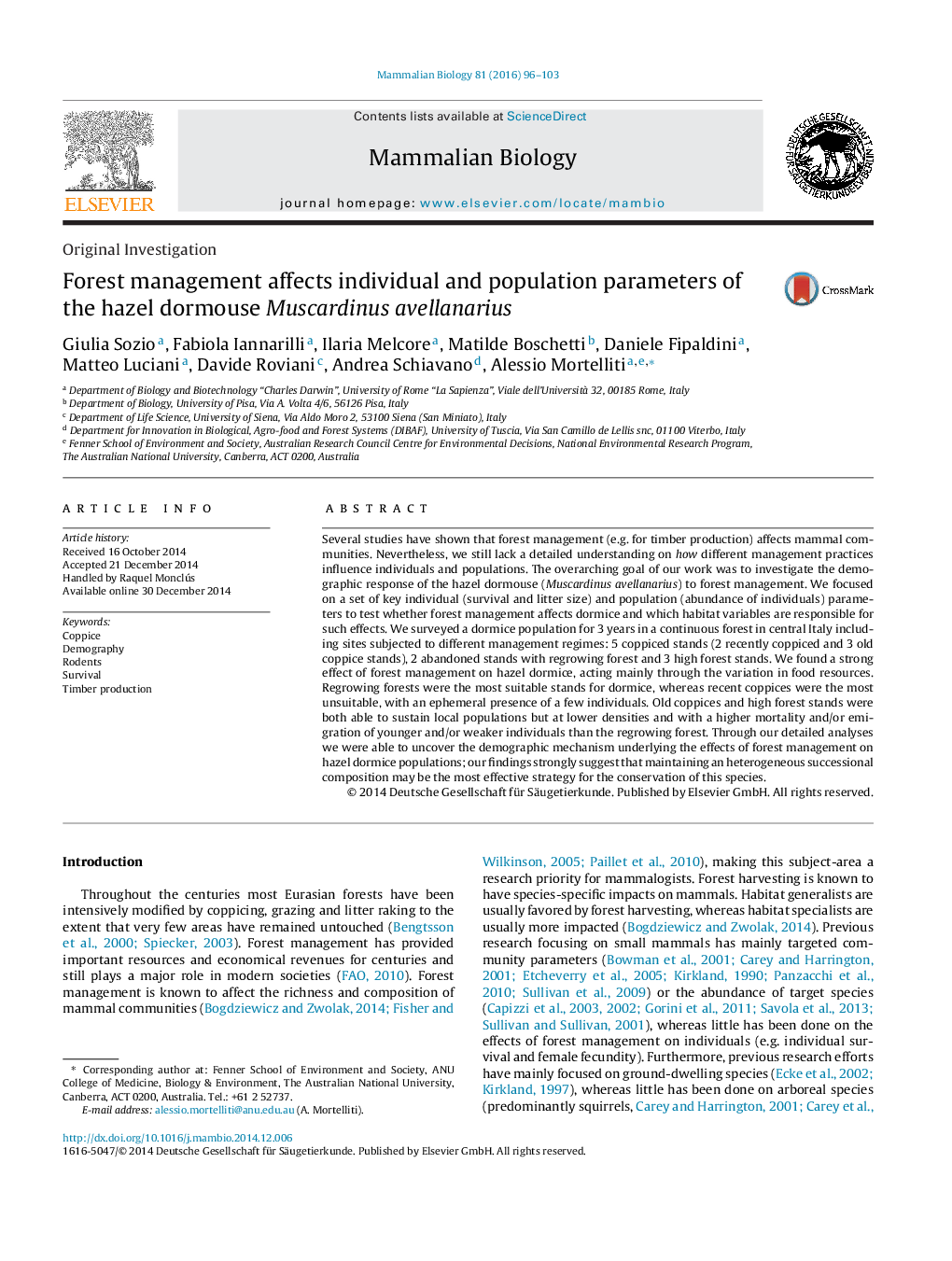| Article ID | Journal | Published Year | Pages | File Type |
|---|---|---|---|---|
| 2193361 | Mammalian Biology - Zeitschrift für Säugetierkunde | 2016 | 8 Pages |
Several studies have shown that forest management (e.g. for timber production) affects mammal communities. Nevertheless, we still lack a detailed understanding on how different management practices influence individuals and populations. The overarching goal of our work was to investigate the demographic response of the hazel dormouse (Muscardinus avellanarius) to forest management. We focused on a set of key individual (survival and litter size) and population (abundance of individuals) parameters to test whether forest management affects dormice and which habitat variables are responsible for such effects. We surveyed a dormice population for 3 years in a continuous forest in central Italy including sites subjected to different management regimes: 5 coppiced stands (2 recently coppiced and 3 old coppice stands), 2 abandoned stands with regrowing forest and 3 high forest stands. We found a strong effect of forest management on hazel dormice, acting mainly through the variation in food resources. Regrowing forests were the most suitable stands for dormice, whereas recent coppices were the most unsuitable, with an ephemeral presence of a few individuals. Old coppices and high forest stands were both able to sustain local populations but at lower densities and with a higher mortality and/or emigration of younger and/or weaker individuals than the regrowing forest. Through our detailed analyses we were able to uncover the demographic mechanism underlying the effects of forest management on hazel dormice populations; our findings strongly suggest that maintaining an heterogeneous successional composition may be the most effective strategy for the conservation of this species.
